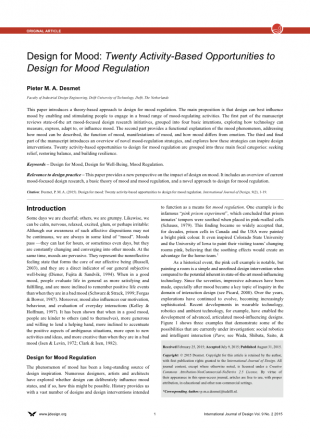This paper introduces a theory-based approach to design for mood regulation. The main proposition is that design can best influence mood by enabling and stimulating people to engage in a broad range of mood-regulating activities. The first part of the manuscript reviews state-of-the art mood-focused design research initiatives, grouped into four basic intentions, exploring how technology can measure, express, adapt to, or influence mood. The second part provides a functional explanation of the mood phenomenon, addressing how mood can be described, the function of mood, manifestations of mood, and how mood differs from emotion. The third and final part of the manuscript introduces an overview of novel mood-regulation strategies, and explores how these strategies can inspire design interventions. Twenty activity-based opportunities to design for mood regulation are grouped into three main focal categories: seeking relief, restoring balance, and building resilience.
Citation
Desmet, P. M. A. (2015). Design for mood: Twenty activity-based opportunities to design for mood regulation. International Journal of Design, 9(2), 1-19.




